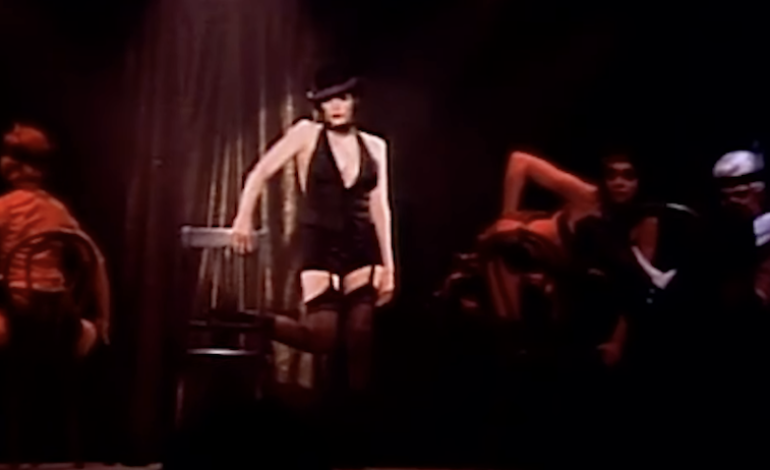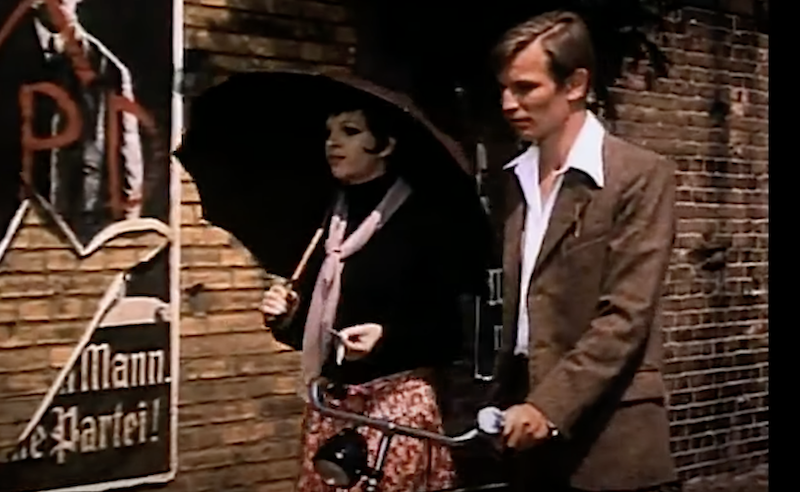

In 1939 Christopher Isherwood published Goodbye to Berlin, a collection of semi-autobiographical short stories inspired by his time in Weimar Berlin. John Van Druten adapted them into a play called I Am a Camera in 1951, which was brought to the screen by director Henry Cornelius in 1955. Legendary Broadway songwriting team John Kander and Fred Ebb turned the stories into the musical Cabaret with the help of librettist Joe Masteroff in 1966, and Jay Allen wrote the screenplay for a film adaptation of the same name directed by Bob Fosse in 1972. Despite all of the changes involved in this telephone song of constant adaptations, one central element of Goodbye to Berlin appears in every incarnation of the story: the character of Sally Bowles.
Sally in the pre-Fosse versions is a British expatriate who performs at the underground nightclub The Lady Windermere (or the Kit Kat Klub in Cabaret) and aspires to become a film star at UFA GmbH. Although she perfectly fits the club’s sleazy atmosphere and carefree attitude towards sexual expression, she’s not a talented singer. Isherwood described her as a woman who “sang badly, without any expression, her hands hanging down at her sides—yet her performance was, in its own way, effective because of her startling appearance and her air of not caring a curse; what people thought of her.” Sally doesn’t care much for politics and remains indifferent to the rise of the National Socialist German Workers’ Party until it’s too late. Julie Harris portrayed Sally in both stage and film iterations of I Am a Camera, while Jill Haworth and Dame Judi Dench brought her character to life in the original Broadway and West End productions of Cabaret.
The character was inspired by real-life teenage nightclub singer Jean Ross, who Isherwood had befriended during his time in Berlin. Ross was also a British-born aspiring actress with lackluster vocal ability but an eccentric and charming bohemian affect. She relished in the creative and sexual freedoms afforded to her by Weimar Germany. In contrast to Sally Bowles in Cabaret, Jean Ross later fled Germany and pursued work as an antifascist journalist and political activist.
This interpretation of Sally Bowles saw significant changes when it came time for the musical movie version to support the casting of Liza Minnelli in the role. In Fosse’s version, Sally is now an American ex-pat instead of being British, and Liza’s father Vincente Minnelli suggested that she be aesthetically based on silent film actress, flapper icon, and women’s rights activist Louise Brooks; with makeup modeled after her most famous role as Lulu in Pandora’s Box (G.W. Pabst, 1929). This Sally is still an aspiring film actress, but her vocal and performance abilities are vastly superior to any previous interpretation. Fosse and Allen retooled the screenplay to center Minnelli’s star turn, resulting in story changes that ultimately worked to the detriment of some of the film’s themes.


The most egregious of these changes involved removing the romance between Sally’s gentile landlady Fräulein Schneider and the elderly Jewish fruit vendor Herr Schultz, which makes up the emotional core of the stage musical. Schneider exists in nearly every version of Goodbye to Berlin and survives as a minor role in the film (played by Elisabeth Neumann-Viertel). Still, her romance with Schultz was invented for the stage musical. Their middle-aged interfaith romance is the most genuine part of the Broadway show, in contrast to the much more eccentric and mismatched pairing of Sally and Clifford and the heightened ironic tone of the Kit Kat Klub performances. Schneider and Schultz genuinely love each other, and the sequence where they decide to call off their marriage due to the rise of the Nazis, culminating in the return of the heartbreaking song “What Would You Do?” is one of the show’s most poignant and impactful moments. The film replaces this with the more conventional star-crossed young lovers story of fake Protestant gigolo Fritz Wendel (Fritz Wepper) and Jewish heiress Natalia Landauer (Marisa Berenson) resurrected from I Am a Camera. The impact of the Nazis on Fritz and Natalia’s romance is still felt, but not to quite the same extent as Schneider and Schultz.
But none of that really matters when Liza Minnelli is front and center. By 1972 Liza Minnelli had a thriving stage career and several album releases to her name, but not much in the way of film roles—and certainly not one that properly showcased her abilities. Cabaret was the first time she sang on film, and she blew everyone away. Roger Ebert called her “one of the great musical performers of our time,” and Roger Greenspun wrote that she “is sometimes wrong in the details of her role, but so magnificently right for the film as a whole that I should prefer not to imagine it without her.” Liza’s energy is so boundless, her attitude so free, and her eccentricities so perfectly matched with Sally’s that it never really matters if she technically fits the character as she was presented in previous iterations. Like Audrey Hepburn in Breakfast at Tiffany’s (Blake Edwards, 1961) before her, Liza Minnelli created a completely fresh take on Sally Bowles that has more or less become the one people think of when they hear the name “Sally Bowles.”


It’s also the performance people think of when they think of Liza Minnelli. She rose to prominence at a time when musicals both on stage and on film were no longer a major force in popular entertainment, and Cabaret, under the direction of Bob Fosse, managed to adapt the film’s form to abide with more contemporary sensibilities. The majority of the American public who didn’t have the pleasure of seeing Liza on stage in her Tony-winning performance in Flora, the Red Menace was introduced not only to a new form of musical entertainment but to the full range of Liza Minnelli’s talent. No longer simply known as the daughter of old-guard musical legends Judy Garland and Vincente Minnelli, Cabaret and her subsequent creative partnership with Fosse on projects like Liza with a Z (1972) presented a Liza who was both entirely of her era and altogether original.
Cabaret (1972) is currently available to stream on HBO Max.
